Sixty years ago, Vietnam became well-known all over the world for the Dien Bien Phu Victory which “resounded throughout the five continents and was world-shaking”. Today, the historical land of Dien Bien which is considered “Heaven’s land” has changed remarkably and has become a cultural, historical, economic and tourist centre of the northwest.
Memory of Dien Bien Province
On the occasion of the 60th anniversary of the Dien Bien Phu historical victory (May 7, 1954 – May 7, 2014), I revisited the old battlefields. I started from Hanoi at daybreak. After driving nearly 500 kilometers of winding roads that ran through mountains and hills, I reached Dien Bien Province at sunset.
I continued to go to the monument of the Dien Bien Phu Victory. Standing at the foot of the huge monument, I had strange feeling and my mind was flooded with the images and stories about the Dien Bien Phu Victory.
The Dien Bien Phu Victory on May 7, 1954 is considered to be a glorious “golden milestone” in the history of the struggle of the Vietnamese people against foreign aggressors. It completely ended the invasion of the French colonialists in Vietnam and throughout Indochina and at the same time marked the complete collapse of old colonialism all over the world, paving the way for the movement of rising up to struggle for national liberation in the colonial countries in Asia, Africa and Latin America.
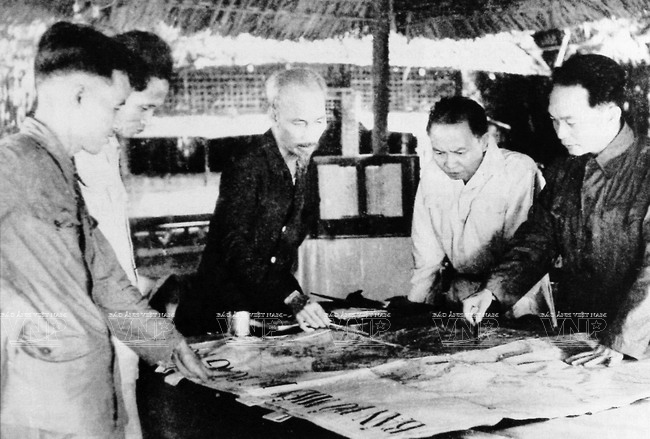
On December 6, 1953, President Ho Chi Minh and the CPV Politburo
decided to launch the Dien Bien Phu Campaign. Photo: VNP’s file
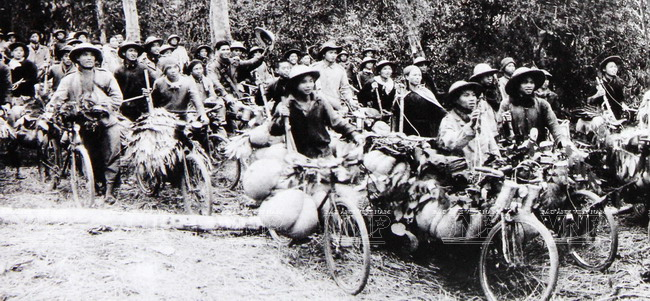
Over 2,000 bicycles were used to transport food, ammunition
and other necessities to the Dien Bien Phu battlefield. Photo: VNP’s file
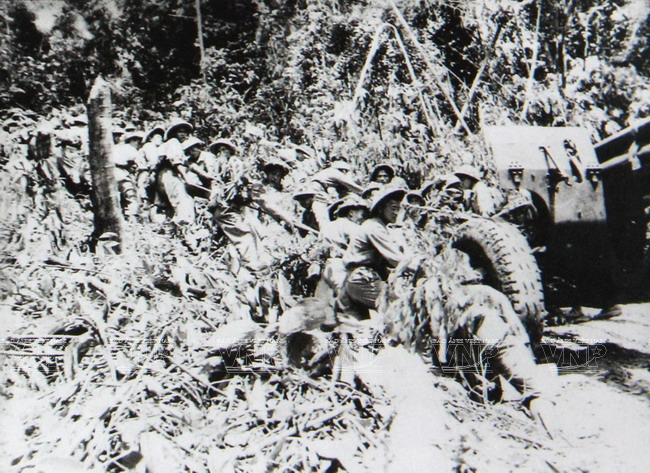
Soldiers of Brigades 315 and 312 pulled heavy artillery pieces to the battlefield. Photo: VNP’s file
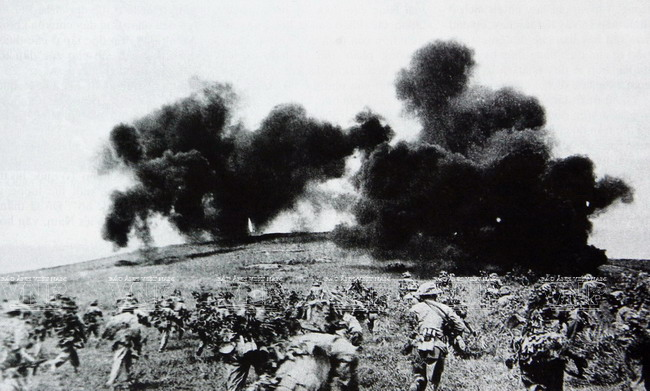
Regiment 98 of Brigade 316 attacked to take C1 Hill. Photo: VNP’s file
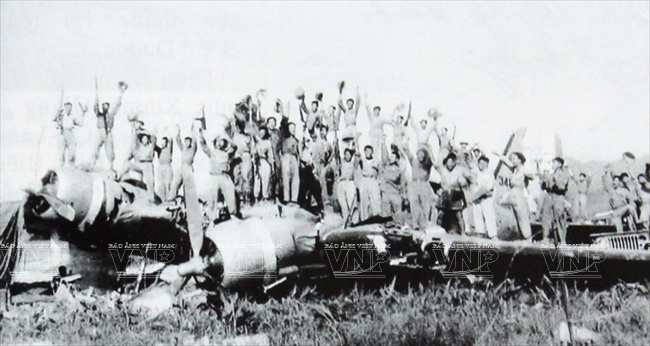
Soldiers cheered near a French aircraft which had been shot down in Muong Thanh. Photo: VNP’file
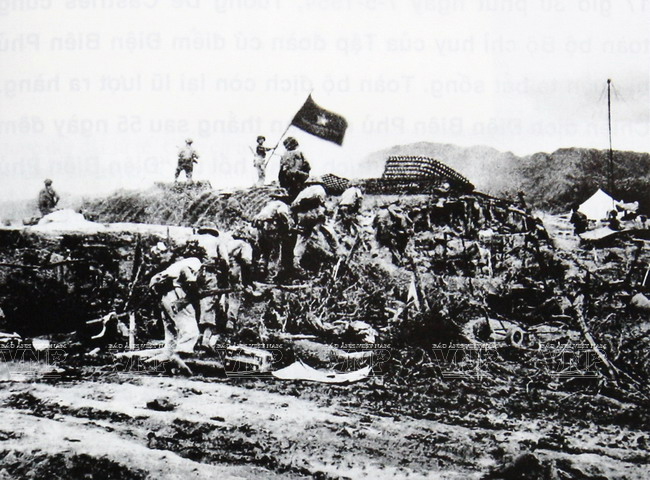
At 17:40pm on May 7, 1954, the “Quyet chien, Quyet thang” flag
proudly flew above the De Castries’ bunker. Photo: VNP’file
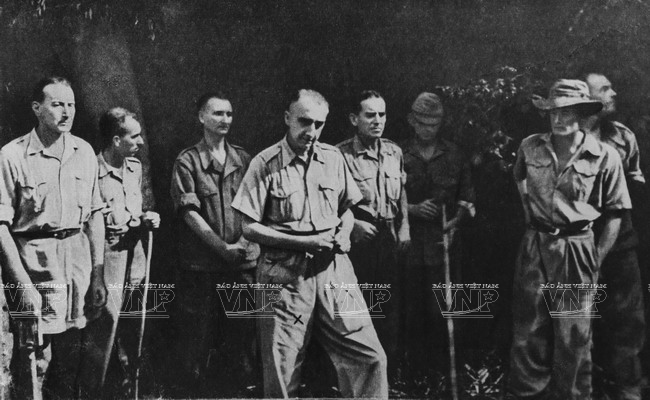
General De Castries and his entire staff were captured alive. Photo: VNP’file
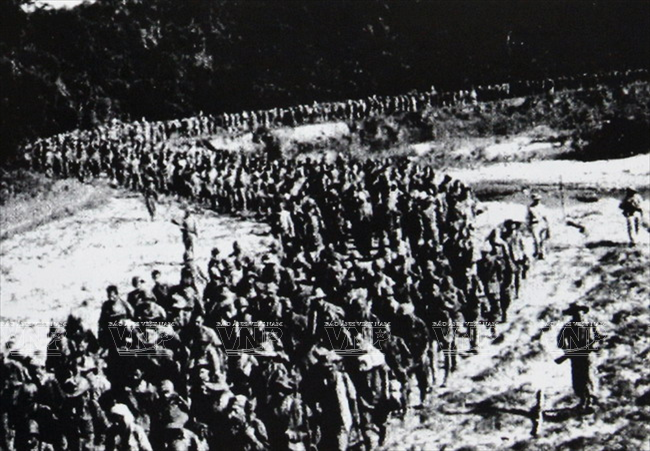
French soldiers came to surrender in Dien Bien Phu. Photo: VNP’file |
«
After 55 days, the Vietnamese army killed and captured 16,200 troops, shot down 62 planes, collected 64 cars and all the weapons, ammunition and military equipment of the enemy at Dien Bien Phu. » |
Under the clear-sighted leadership of the Party Central Committee headed by President Ho Chi Minh, and the wise strategic command of General Vo Nguyen Giap who was the “elder brother” of the Vietnam People’s Army, the army and people unanimously fought with braveness, ingeniousness and creativeness and smashed the entire Dien Bien Phu entrenched fortification, an “impregnable fortress” of the French expeditionary forces in Indochina.
After 55 days of digging in the mountain, sleeping in the trenches, enduring continuous rain, eating compressed rice and suffering the loss of lives, the Vietnamese army and people achieved glorious feats of arms which made the names of Muong Thanh, Hong Cum, Him Lam, Keo Hamlet, A1 Hill and C1 Hill become immortal. These places were not only the graves of the French troops but also demonstrated the spirit of determination to defeat the invaders for national independence and freedom of the Vietnamese army and people.
After 60 years, the epic of Dien Bien Phu Victory is still remembered. On these days, thousands of people throughout the country came to Dien Bien Province to visit the old battlefield and burn incense sticks to pay tribute to those who laid down their lives.
I met a grey-haired old woman who sat thoughtfully for a long time in front of a grave in the martyrs’ cemetery on Him Lam Hill. On the grave there is a stele with the words “Duoc Ha Nam”. She told me that her name was Dan Thi Danh and her house was on Hang Gai Street in Hanoi. She is the elder sister of martyr Dan Van Duoc who was killed only some days before Dien Bien was liberated. She said that every year, on the occasion of the anniversary of the Dien Bien Phu Victory she came to this area to burn incense sticks to commemorate her brother.
Saying goodbye to old Danh, I suddenly had a surge of emotion. Dien Bien today and tomorrow exists forever because it has been built with the blood and bones of the children of a heroic and unyielding Vietnam.
Happy Days in “Heaven’s Land”
From D1 Hill where the monument of the Dien Bien Phu Victory is situated, I saw the spacious and modern city of Dien Bien Phu.
Not long ago, on the occasion of the 55th anniversary of the Dien Bien Phu Victory, the city of Dien Bien Phu was still in disorder with many works under construction. Now the city is quite different.
The roads are convenient for travel. It takes only a little over half an hour to go by air from Hanoi to Dien Bien. The land and air routes have shortened the distance between Dien Bien and the rest of the country, helping the province to strongly develop its economy and tourism. The tours to visit the historical complex of the Dien Bien Phu Victory have become a must do of this “Heaven’s land”.
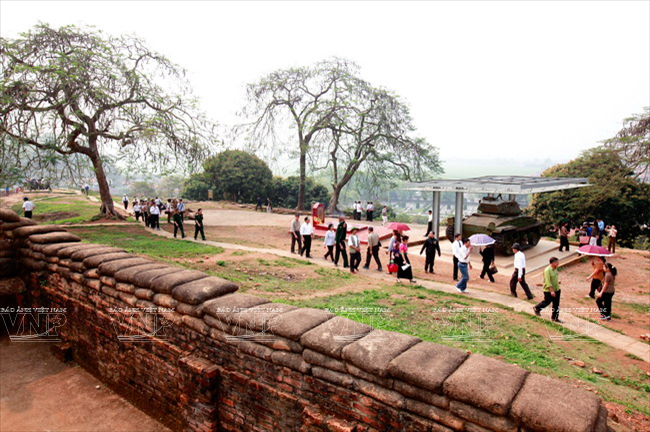
Tourists visit A1 Hill which was the scene of the fiercest fighting between the Vietnamese and the French.
It was a decisive battle for the entire Dien Bien Phu Campaign 60 years ago. Photo: Viet Cuong
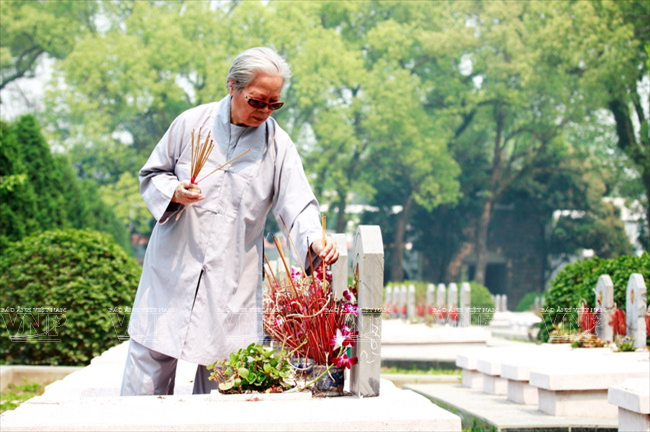
Elder Dan Thi Lanh from Hanoi offers incense to martyrs at Dien Bien Phu Cemetery.
She is the elder sister of martyr Dan Van Duoc who was killed only some days before Dien Bien was liberated.
Photo: Viet Cuong
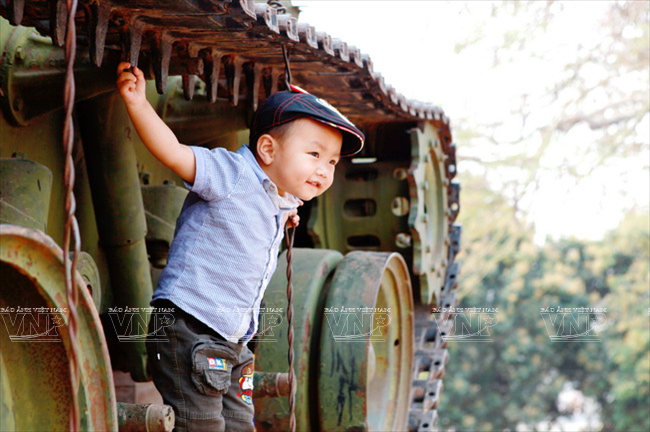
A little boy on the French tank (Bazeille) on A1 Hill. Photo: Viet Cuong
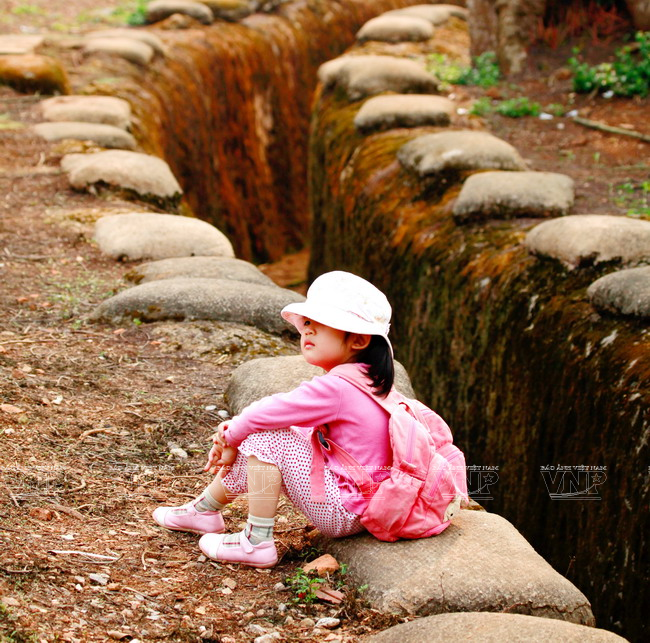
The vestige of the French fortifications on the top of A1 Hill. Photo: Viet Cuong
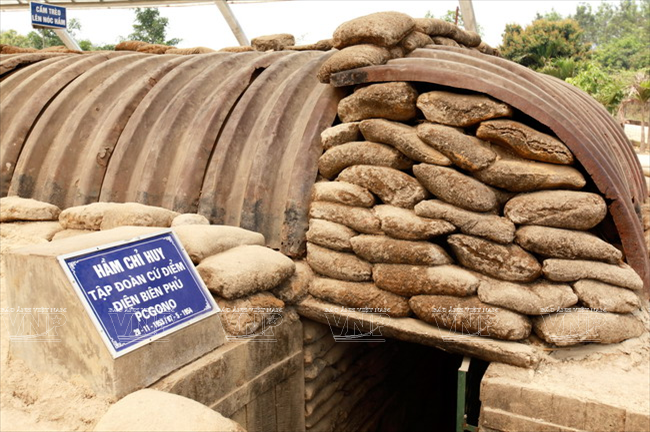
The trench of the Dien Bien Phu group of fortresses where General De Castries
and his entire staff were captured alive. Photo: Viet Cuong

During a lesson at a class in Dien Bien Province’s Ethnic Boarding High School. Photo: Viet Cuong
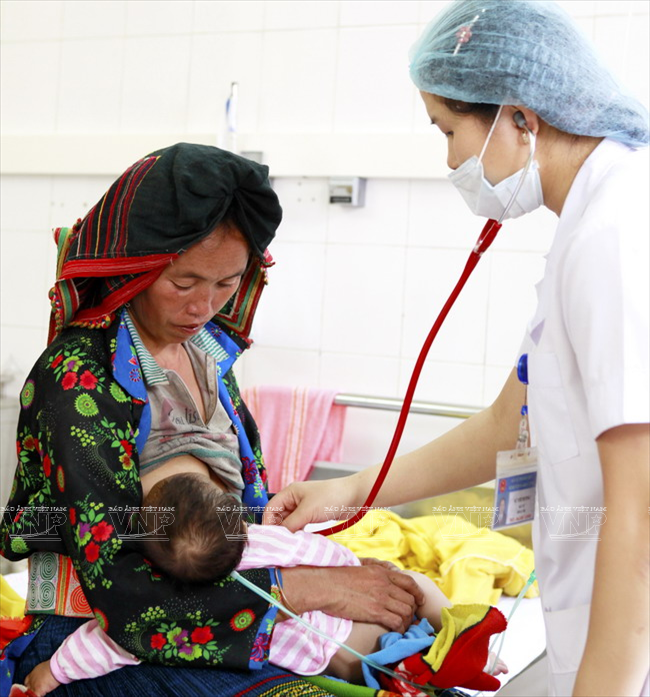
Giving medical treatment to ethnic people in Dien Bien Province’s General Hospital. Photo: Viet Cuong
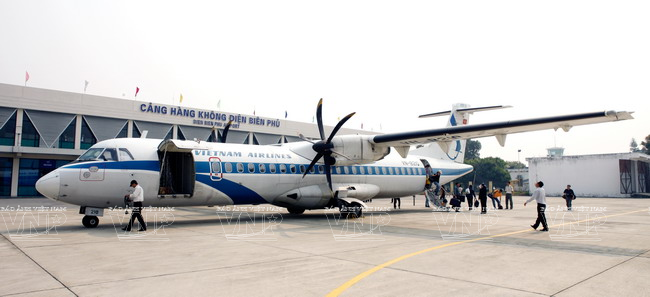
Present-day Dien Bien Airport which was an important fortification and
the central airport of the entrenched camp of Dien Bien Phu. Photo: Hoang Ha
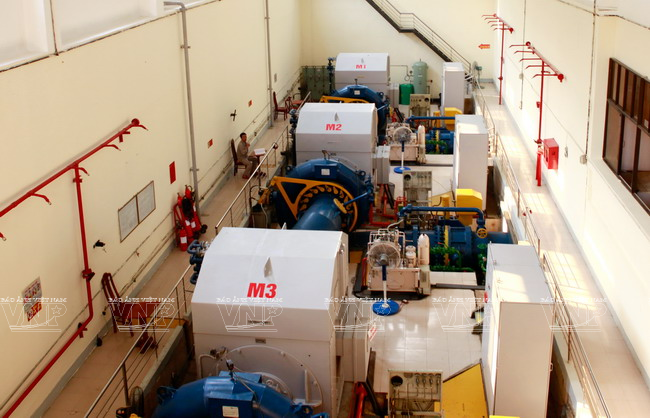
Na Loi Hydropower station. Photo: Hoang Ha
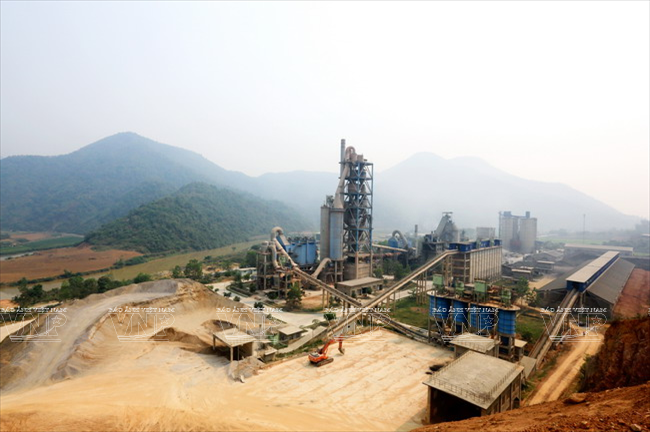
Panoramic view of Dien Bien Cement Plant. Photo: Hoang Ha
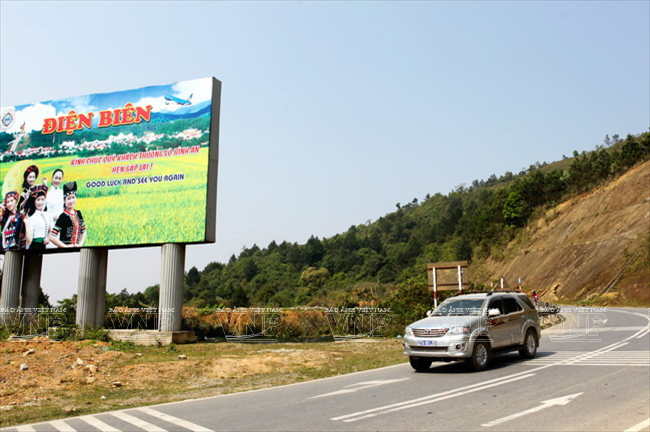
On the road leading to Pha Din Pass in Dien Bien. Photo: Hoang Ha
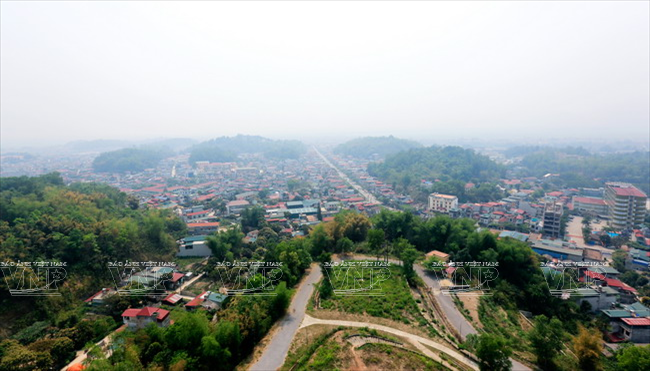
Part of Dien Bien City seen from above. Photo: Hoang Ha |
Also, the material facilities for people’s life have increased considerably. When I visited the city of Dien Bien Phu, I was very surprised at the planning of the city’s hospitals. As Dien Bien is a young city, it has proactively planned to build the hospitals away from the city centre. The hospitals are situated 2km away from the city centre on the way to Muong Phang District, which is very convenient for providing health care and medical treatment for people.
A short distance away from the city of Dien Bien Phu, there are areas for growing clean vegetables. This is also an orientation of Dien Bien Province in shifting the agricultural structure towards specialization and modernization.
For the agricultural development of the province, 600ha of land in Tua Chua District have been zoned off for the cultivation of Shan Tuyet tea, one of the agricultural crops defined as the strength of Dien Bien Province. In this area there are hundreds of Shan Tuyet tea trees which are hundreds of years old.
The deputy chairman of Sin Chai Commune led me to visit the family of Hang A Chu, a Mong ethnic man. Chu is a bright example in the household economy development. Every year his family processes 800-1,000 kilograms of tea. With the market price of 250,000 VND per one kilogram of Tua Chua tea he earns hundreds of millions of dong, a figure that many farmers in the mountainous areas dream of. This shows that the province has the ability to shift the agricultural structure, taking advantage of the local potential in an effective and sustainable way.
Talking about the cultural imprint of Dien Bien Province, the unique culture of the ethnic communities should be mentioned. These features are clearly seen in festivals and rituals such as wedding. During my stay in Dien Bien, by chance I attended a wedding ceremony of the Thai people which left a long-lasting impression on me.
My stay in Dien Bien was full of fun and strange things. The happy wedding of the Thai girl made me think that “Heaven’s land”, like human life, will always develop and flourish.
Story: Thao Vy - Photos: Hoang Ha, Viet Cuong & Files